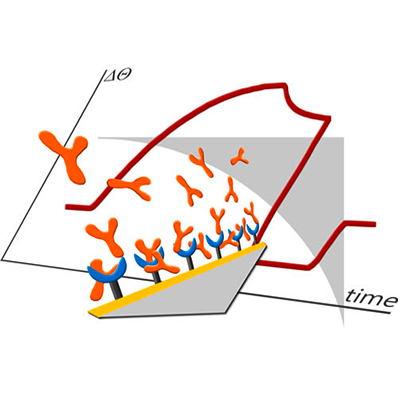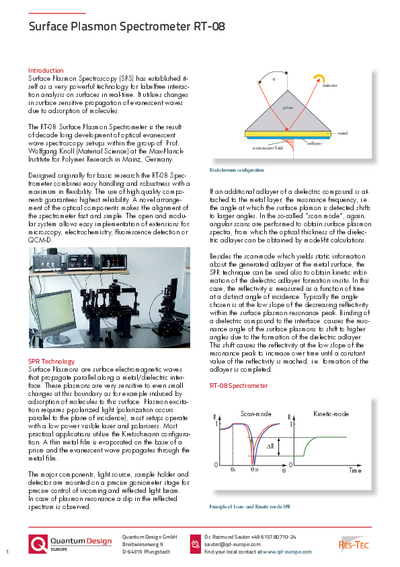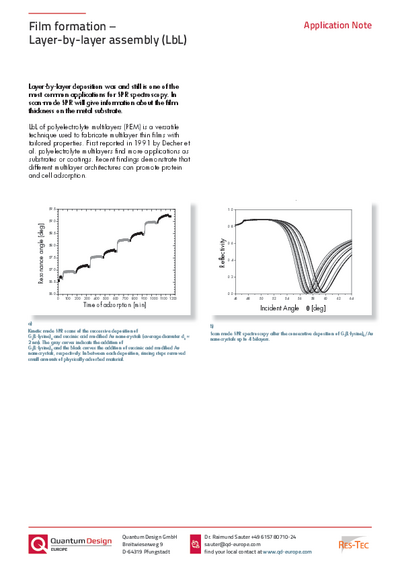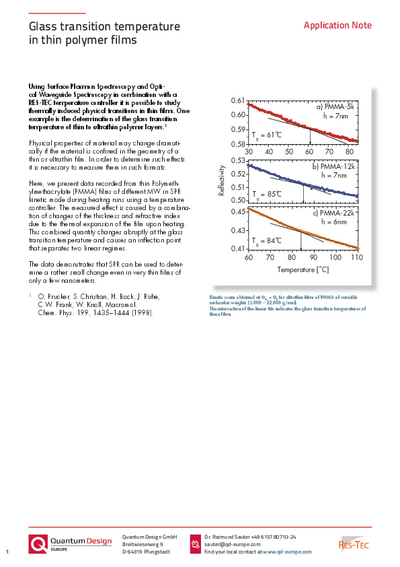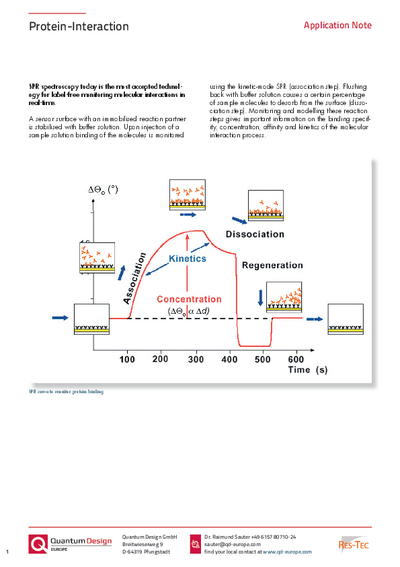Research-grade surface plasmon spectrometer
RT-08 from Res-TecSurface plasmon spectroscopy (SPS) has established itself as a very powerful technology for labelfree interaction analysis on surfaces in real-time. It utilizes changes in surface sensitive propagation of evanescent waves due to adsorption of molecules. Designed originally for basic research the RT-08 spectrometer combines easy handling and robustness with a maximum in flexibility. The use of high quality components guarantees highest reliability. A novel arrangement of the optical components makes the alignment of the spectrometer fast and simple. The open and modular system allows easy implementation of extensions for microscopy, electrochemistry, fluorescence detection or QCM-D.
- Label-free molecular interaction analysis in real time
- Maximum flexibility to adapt the system the the needs of the experiment
- High-quality components garantee highest reliability
- Easy handling and robustness
- Open and modular system for easy implementation of extensions for microscopy, electrochemistry, fluorescence detection or QCM-D.
Further information
The RT-08 surface plasmon spectrometer is the result of decade long development of optical evanescent wave spectroscopy set ups within the group of Prof. Wolfgang Knoll (Material Science) at the Max-Planck-Institute for Polymer Research in Mainz, Germany.
Applications
Downloads
Contact



